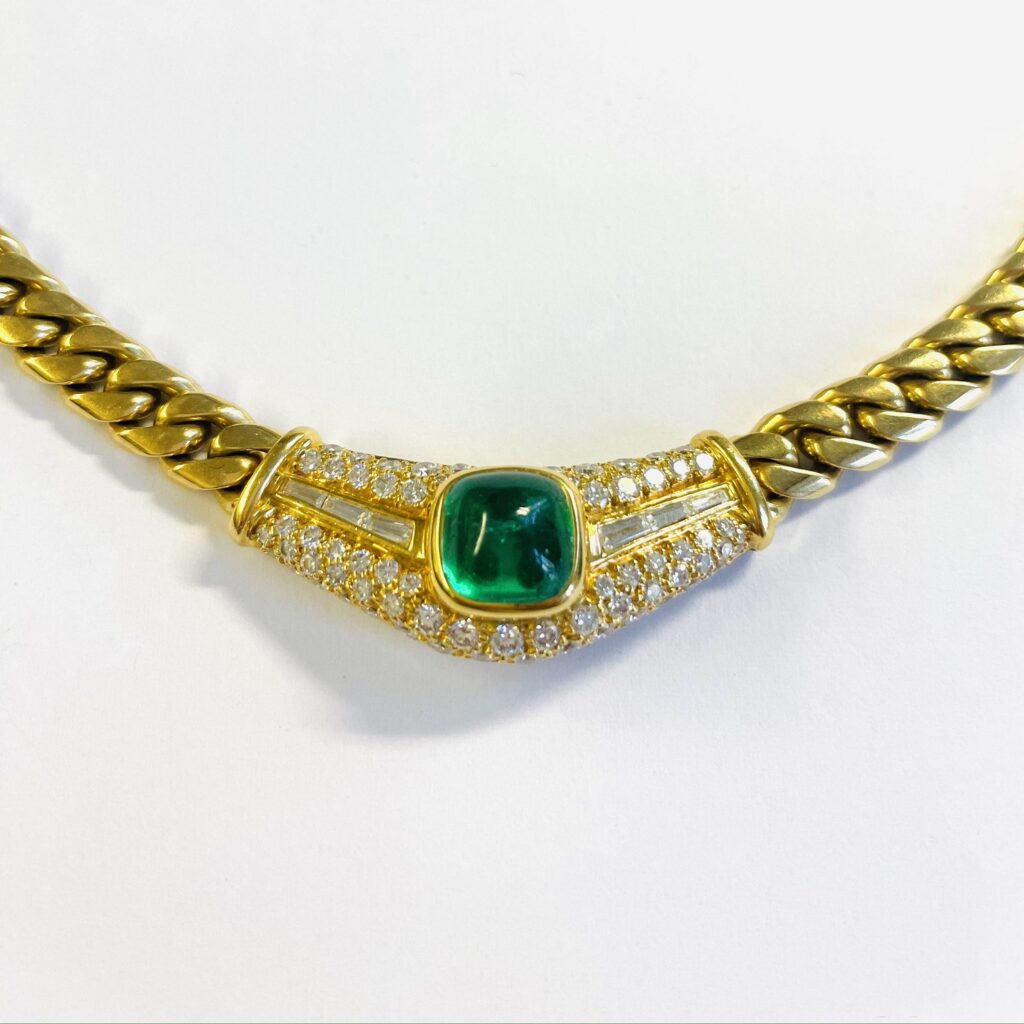
Big, bold bodacious color defines Bulgari jewelry, but it didn’t start out that way. In fact, the story of Bulgari begins in Greece in a small village in the Pindus mountains in the northern part of the country where Sotirio Voulgaris was born in 1857. It was there that Sotirio, working alongside his father, learned the art of silversmithing, which was a tradition that was passed from generation to generation in that region of Greece.
After the country faced some serious political turmoil, Sotirio and his father moved to the island of Corfu off the coast of Greece. In 1880 Sotirio made his way to Naples, Italy before finding his way to Rome, where he opened a store in 1884. When he first opened shop, Sotirio sold antiques, silver and archeological revival jewelry which was popular with tourists visiting Italy. The store was located in a touristy area of Rome and travelers from the United Kingdom who were on the “Grand Tour” and others from the United States purchased many items. Sotirio had earned a reputation for his superb craftsmanship and was so successful that he opened a larger store in a new location a few years later.
Voulgaris Becomes Bulgari

At the turn of the 20th century, Sotirio’s two sons, Giorgio and Constantino, joined the business. The firm continued to grow and by 1905 they had to move once again. By this time Sotirio had adapted to life in Italy, which included him changing his name from the Greek Voulgaris to the more Italian Bulgari. The “V” that we always see used in the Bulgari logo comes from the traditional Italian alphabet.
Sotirio died in 1932 and left the business to his two sons. As often happens when a new generation enters a family business, the brothers made some changes, which were already happening prior to Sotirio’s death. Giorgio and Constantino shifted the focus of the business to concentrate more on high jewelry styles that were contemporary and in line with French fashion – Edwardian and Art Deco styles in platinum were popular at that time and sold well in the store. In the 1940s, as World War II raged through Europe, jewelry styles were forced to change due to the challenges of getting the necessary materials. Platinum was not readily available as it had been declared a strategic metal and was reserved for military use. In response Bulgari turned to yellow gold with colored gemstones, both of which were easier to access during the war years. Colored gemstones were on their way to becoming a signature of the house.

After the war, when the world was feeling optimistic and hopeful, a distinctive new look was becoming more pronounced at Bulgari. Color became the core of the brand, unexpected combinations of colors that were quite daring for the time were central to the firm’s look. Bulgari also began using more cabochon gems to show off more of the stone’s color. They once again began creating platinum jewelry with diamonds, sapphires, emeralds and rubies — gems that were hard to acquire during the war years. Inspired by Roman architecture, this big, bodacious style blossomed into the 1960s and early 1970s and became synonymous with Italy’s “La Dolce Vita” years popularized by the film of the same name that came out in 1960. Drawing from ancient Roman culture, Bulgari launched its Monete collection in 1966. The pieces feature ancient coins set in bezels suspended from a chain. The collection has become a cornerstone of the brand and continues to be popular to this day. It was during this time that Bulgari was on the radar of Italian nobility and celebrities such as Elizabeth Taylor, Sophia Loren and Audrey Hepburn, which brought tremendous recognition to the firm.
A New Bulgari Generation

Girogio and Constantino’s children eventually entered the business. Girogio had three sons, Gianni, Paola and Nicola, while Constantino had two daughters, Anna and Marina. In 1967 they began to take over the firm. This third generation of the family had their own ideas on how to run the business, changing it yet again and launching the firm on the design path that we recognize today as Bulgari — impeccable production, flamboyant color and signature motifs. They also introduced watches. And the brothers began expanding the business, opening stores in Paris, Geneva and New York City. Anna got married and left the business and In 1976 Marina left to start her own jewelry company, Marina B.

During the 1980s, Bulgari changed again and began producing jewelry meant for everyday wear. The firm also added small accessories into its offerings including scarves, handbags and perfume. In 2011, luxury purveyor LVMH purchased Bulgari for a reported $6 billion. Today, the brand continues its innovative designs that stay true to its DNA of bold, beautiful color combined with exceptional craftsmanship.
Featured image (top of page): Cabochon ruby, emerald and sapphire earrings with diamond accents set in 18-karat yellow gold, signed Bulgari, circa 1960s, courtesy Tiina Smith.
Authored by Amber Michelle
All jewelry featured in this blog may be found on Jewelers Circle Pro.
